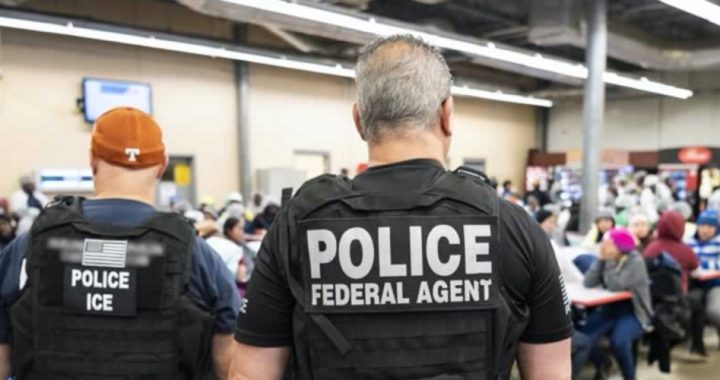
Podcast: Play in new window | Download ()
Subscribe: Android | RSS | More
The release of a little less than half the illegal aliens collared in Wednesday’s raids in Mississippi was, for those expecting President Trump to do as he promised, disappointing.
But the catch and release was hardly a surprise. In announcing the raids, Immigration and Customs Enforcement admitted it wouldn’t deport all the illegals it arrested.
As well, the Trump administration has proven notoriously incapable of following through on any of the president’s solemn vows to secure the border. Illegals are pouring across with impunity, only to be caught and then released.
Now, the administration has refined and expanded that policy.
The Raid
Agents from ICE’s Enforcement and Removal Operations and Homeland Security Investigations “executed search warrants at food processing plants across Mississippi Wednesday, resulting in the arrest of 680 people,” the Clarion Ledger of Jackson reported on Wednesday.
Six hundred agents surrounded plants in Bay Springs, Carthage, Canton, Morton, Pelahatchie, and Sebastapol. Though ICE didn’t release the names of companies it raided, the Clarion Ledger reported, the list included the Koch Foods Inc. processing plant in Morton and Peco Chicken Processing Plant in Canton.
But ICE quickly diminished the effectiveness of such a raid.
Reported the Clarion Ledger:
Bryan Cox, ICE spokesperson, said everyone taken into custody and detained Wednesday will be processed but “not everyone is going to be [permanently] detained.”
“You are going to have persons released,” he said. “ICE makes custody determination on a case-by-case basis based on the totality of their circumstances.”
That statement echoed the news release from ICE in announcing the arrest:
All the unlawfully present foreign nationals arrested Wednesday are being interviewed by ICE staff to record any potential mitigating humanitarian situations. Based on these interviews, and consideration of their criminality and prior immigration history, ICE is determining on a case-by-case basis based on the totality of the circumstances which individuals will be detained and which persons may be released from custody at present. In all cases, all the illegal aliens encountered as part of this operation are either being placed into removal proceedings before the federal immigration courts, and for those who already received due process and have been ordered removed, processed for removal from the U.S.
That’s the long way of saying the Trump administration didn’t have the guts to send them home where they belong.
300 Let Go
Thus did the agency free almost half, the newspaper reported, after the statewide panic among its large community of border jumpers.
Amusingly, ICE released 30 almost immediately in the very spot they were detained on those “humanitarian grounds,” the Clarion Ledger reported, citing a release from the U.S. attorney for the Southern District of Mississippi.
And “another 270 were released after being processed by Homeland Security Investigations on Wednesday. Those 270 were taken back to where they were initially detained, the release stated.” And “according to the Associated Press, ICE officials said 18 juveniles were among the released workers, including a 14-year-old.”
That enlightening datum raises the obvious question of whether the employers are following the state’s child-labor laws.
Families Release
The mass release after the mass arrest is hardly a surprise.
In testimony before the U.S. Senate’s Committee on Homeland Security and Governmental Affairs two weeks ago, Mark Morgan, chief of Customs and Border Protection, confessed to Senator Ron Johnson (R-Wis.) that his agents are releasing illegal who show up in “families” almost immediately after they’re apprehended.
“Since March of this year,” Morgan testified, “the United States Border Patrol has been releasing family units directly, so in some cases, they’re being released in under 48 hours into the interior of the United States.”
Yet federal immigration gumshoes have determined that nearly 6,000 “families” were fake, which means, most likely, that CBP released more than a few phonies.
And that’s why the illegals so often show up in “families,” Morgan testified.
“That is one of the largest pull factors,” Morgan said, “and it’s not going to stop…. We need to stem the flow. As long as our laws are where they are, you’re gonna grab a kid. That is your passport into the United States. They know that in the Northern Triangle countries and they are exploiting that every day.”
In July, the number of illegals who crossed in so-called families was 46,910, or 57.2 percent of the total. For the year, 474,787 of the 862,785 illegals, or 55 percent, were in “families.”
But with the administration’s new policy of “humanitarian” release of deportable illegals, it appears that crossing the border in a family is no longer necessary to avoid deportation.
Photo of ICE raid: U.S. Immigration and Customs Enforcement



